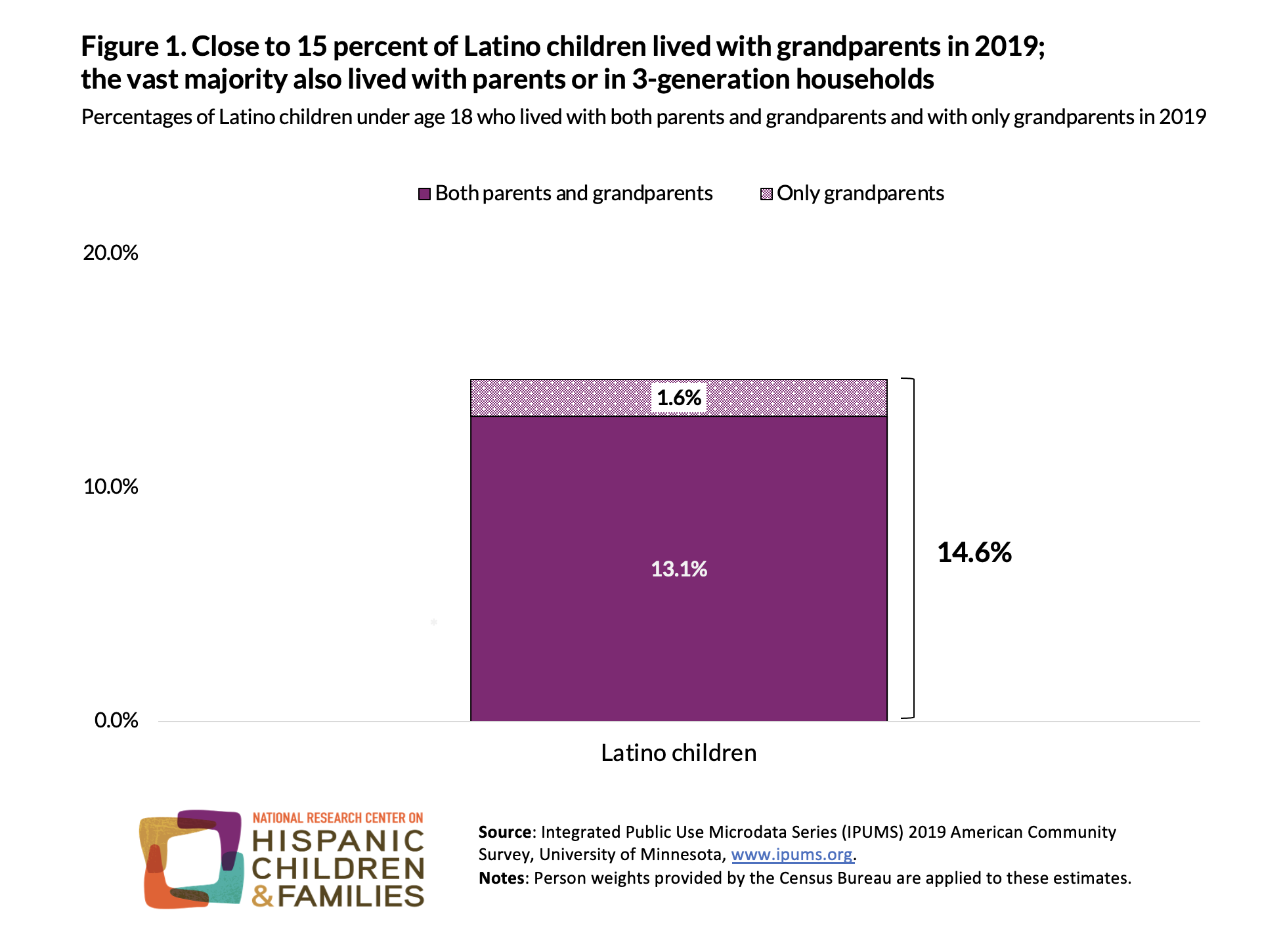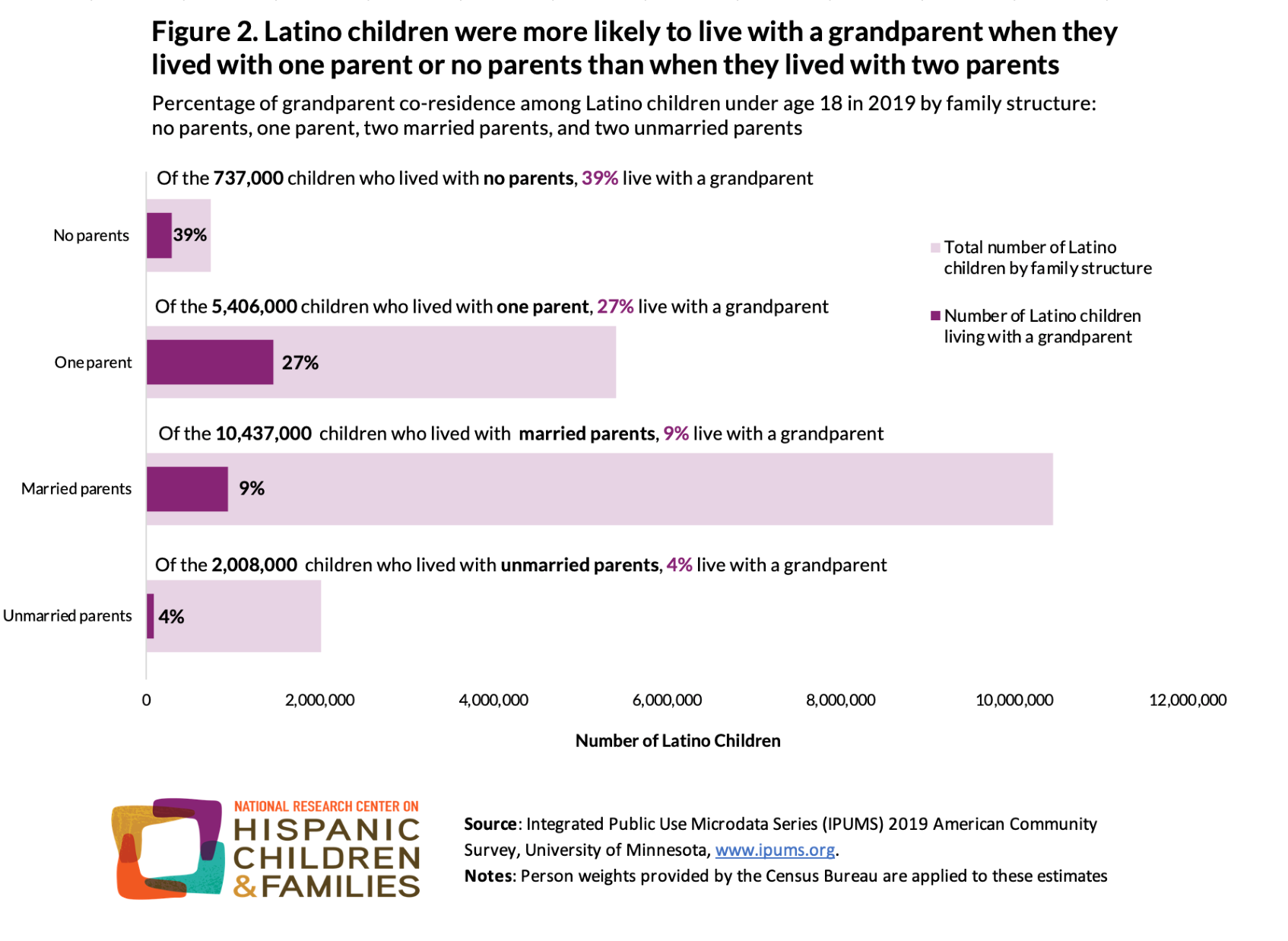Oct 12, 2022
Hispanic Family Facts, Research Publication
One in Seven Latino Children Live With Grandparents, Who Play an Important Role in Children’s Lives
Authors:
Co-residence with grandparents is the most common extended family living arrangement for children, a situation that can shape childhood experiences. Our new analysis of the American Community Survey finds that one in seven Latino childrena (14.6%) lived with a grandparent in 2019,b which amounts to 2.7 million children overall. The vast majority of Latino children who lived with a grandparent also lived with their parents (totaling 13% of all Latino children). In other words, these children lived in multi-generational households with three or more generations under the same roof. A much smaller group, 1.6 percent of all Latino children, lived with their grandparents and no parents, a family structure often referred to as a skipped-generation household.

The likelihood of a child’s co-residence with a grandparent generally increases when they live with one or no parents. Close to 40 percent of Latino children with no parents in their household lived with their grandparents, 27 percent who lived with one parent lived with their grandparents, and 8 percent who lived with two parents—either married or cohabiting—lived with grandparents. Our findings, and those of other researchers, suggest that grandparents who live with grandchildren may provide caregiving and other support to grandchildren (and their parents). Indeed, we find that 20 percent of Latino children who lived with a grandparent had a grandparent who reported that they were responsible for most of the basic needs of any grandchildren in the household (analysis not shown graphically).c

While grandparents can serve as children’s primary caregivers when parents are absent or not able to care for them, grandparent co-residence can also burden adult children who care and provide for their aging parent(s) and stretch their resources, time, and energy. Grandparent co-residence can put a strain on family relationships, including those between grandparents and grandchildren and between grandparents and adult children—especially if the two generations disagree about childrearing, personal boundaries, and household responsibilities.
Grandparent co-residence is not perfect, but it can offer benefits to three generations of family members. For example, co-residence offers opportunities to pass on cultural traditions, family stories and history, and languages. Co-resident grandparents can serve as a vital source of care and emotional support to grandchildren. Grandparents can also share housing and other economic resources and help buffer young families from the impact of parental unemployment, divorce, incarceration, and health problems. Other research also suggests the importance of grandparent co-residence in a child’s life, such as developmental benefits—particularly for young Latino children.
Footnotes
a We define Latino children as children under age 18 for whom a Latino or Hispanic origin (of any race) was reported.
b We consider children to be living with their grandparent(s) based on the relationships reported for each adult and child residing in the household to the household’s reference person (i.e., the adult survey respondent in the American Community Survey), as well as additional variables created by IPUMS that identified parent-and-child pairs living in the household. Also see https://usa.ipums.org/usa-action/variables/POPRULE#description_section.
c The 2019 American Community Survey asked: “Is this grandparent currently responsible for most of the basic needs of any grandchildren under the age of 18 who live in this house or apartment?”

